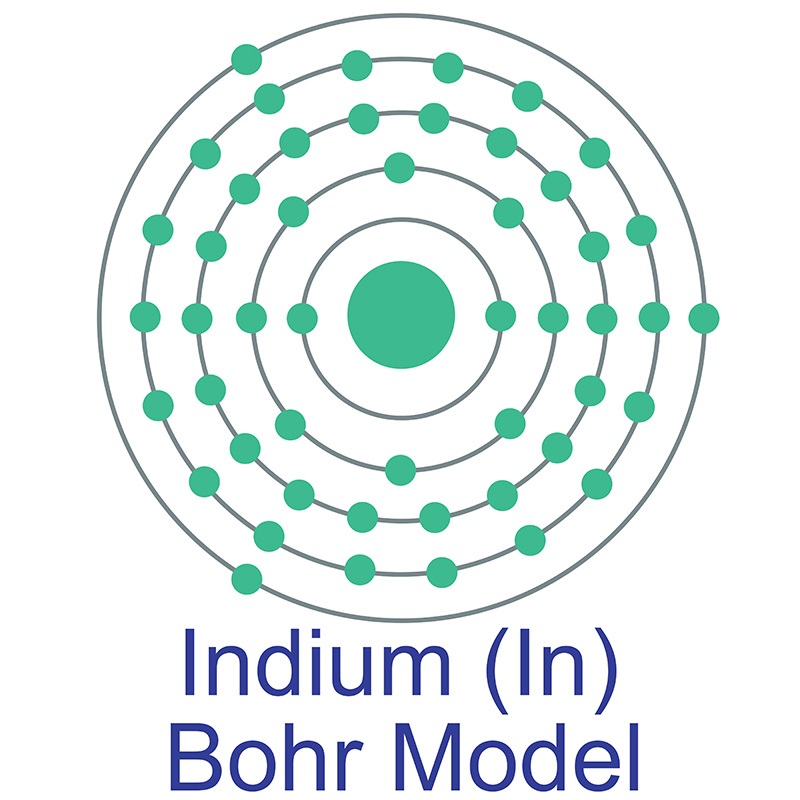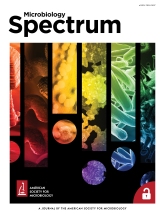SECTION 1. IDENTIFICATION
Product Name: Indium-113 Metal Isotope
Product Number: All applicable American Elements product codes, e.g. IN-M-01-ISO.113I
CAS #: 14885-78-0
Relevant identified uses of the substance: Scientific research and development
Supplier details:
American Elements
10884 Weyburn Ave.
Los Angeles, CA 90024
Tel: +1 310-208-0551
Fax: +1 310-208-0351
Emergency telephone number:
Domestic, North America: +1 800-424-9300
International: +1 703-527-3887
SECTION 2. HAZARDS IDENTIFICATION
OSHA Hazards
Target Organ Effect, Irritant
Target Organs
Teeth, Gums
GHS Classification
Acute toxicity, Oral (Category 4)
Acute toxicity, Dermal (Category 4)
Skin irritation (Category 2)
Eye irritation (Category 2)
Acute toxicity, Inhalation (Category 4)
Specific Target Organ Toxicity - Single exposure (Category 3)
GHS Label Information
Signal Word Warning
Hazards Identification

Hazard Statement(s)
Harmful if swallowed or in contact with skin.
Causes skin irritation.
Causes serious eye irritation.
Harmful if inhaled.
May cause respiratory irritation.
Precautionary Statement(s)
Avoid breathing dust/fume/gas/mist/vapours/spray.
Wear protective gloves/protective clothing/eye protection/face protection.
IF IN EYES: Rinse with water for several minutes. Remove contact lenses.
Potential Health Effects
Eyes Causes eye irritation.
Ingestion May be harmful if swallowed.
Inhalation May be harmful if inhaled. Causes respiratory tract irritation.
Skin May be harmful if absorbed through the skin. Causes skin irritation.
HMIS Ratings
Chronic Health *
Physical 0
Flammability 0
Health 2
NFPA Codes
Fire 0
Health 2
Reactivity 0
SECTION 3. COMPOSITION/INFORMATION ON INGREDIENTS
Composition / Information on Ingredients
Chemical Formula In
Molecular Weight 112.90
CAS No. 14885-78-0
EC No. 231-180-0
SECTION 4. FIRST AID MEASURES
First Aid Measures
Eyes Flush eye with water for 15 minutes. Get medical attention.
Ingestion Never give anything by mouth to an unconscious person. Rinse mouth with water. Consult a physician.
Inhalation If breathed in, move person to fresh air. If not breathing, give artificial respiration. Consult a physician.
Skin Wash with soap and plenty of water. Consult a physician.
Additional Consult a physician. Show this safety data sheet to the doctor in attendance. Move out of
Information dangerous area.
SECTION 5. FIREFIGHTING MEASURES
Fire Fighting Measures
Extinguishing Media Use water spray, alcohol-resistant foam, dry chemical, or carbon dioxide.
Fire Fighting Equipment Wear self contained breathing apparatus for fire fighting if necessary.
SECTION 6. ACCIDENTAL RELEASE MEASURES
Accidental Release Measures
Use personal protective equipment. Avoid dust formation. Avoid breathing dust. Ensure adequate ventilation
Personal Precautions
Environmental Precautions Do not empty into drains.
Methods and materials for containment and cleanup
Pick up and arrange disposal without creating dust. Keep in suitable, closed containers for disposal.
SECTION 7. HANDLING AND STORAGE
Precautions for Safe Handling
Handling Avoid contact with skin and eyes. Avoid formation of dust and aerosols. Provide appropriate exhaust ventilation at places where dust is formed. Normal measures for preventive fire protection.
Conditions for Safe Storage
Storage Keep container tightly closed in a dry and well-ventilated place.
SECTION 8. EXPOSURE CONTROLS/PERSONAL PROTECTION
Personal Protecton
Eyes - Face Wear safety glasses with side shields (or goggles) and a face shield.
Skin Choose body protection according to the amount and concentration of the dangerous substance at the work place.
Respiratory When appropriate, use NIOSH/CEN approved respirator.
Protective Clothing Wear suitable protective clothing and gloves.
Work Hygienic Practices Handle in accordance with good industrial hygiene and safety practice. Wash hands before breaks and at the end of workday.
SECTION 9. PHYSICAL AND CHEMICAL PROPERTIES
Form Beads
Color Silver, White
Odor Odourless
pH No data available
Melting Point 155 - 158 °C (311 - 316 °F) - lit
Boiling Point 2,000 °C (3,632 °F) at 1,013 hPa (760 mmHg)
Flashpoint Not applicable
Lower Explosion Limit No data available
Upper Explosion Limit No data available
Vapor Pressure < 0.01 hPa (< 0.01 mmHg) at 25 °C (77 °F)
Density 7.3 g/cm3 at 25 °C (77 °F)
Solubility in Water Insoluble
Auto Ignition Temperature No data available
SECTION 10. STABILITY AND REACTIVITY
Stability and Reactivity
Chemical Stability Stable if stored under recommended conditions.
Conditions to Avoid Not available
Hazardous decomposition products Formed under fire conditions: Indium/indium oxides
Materials to avoid Strong oxidizing agents, Sulphur compounds, Strong acids, Halogens, Acetonitrile
Materials to avoid: Tellurium, arsenic powder, phosphorous
SECTION 11. TOXICOLOGICAL INFORMATION
Acute Toxicity
Serious Damage/Eye Irritation No data available
Skin Corrosion/Irritation No data available
Inhalation No data available
Respiratory or Skin Sensitization Not available
Germ Cell Mutagenicity Not available
IARC No component of the product present at levels greater than or equal to 0.1 % is identifiable as probable, possible, or confirmed human carcinogen by IARC.
ACGIH No component of the product present at levels greater than or equal to 0.1 % is identifiable as probable, possible, or confirmed human carcinogen by IARC.
NTP No component of this product present at levels greater than or equal to 0.1 % is identified as a
known or anticipated carcinogen by NTP.
OSHA No component of this product present at levels greater than or equal to 0.1 % is identified as a carcinogen or potential carcinogen by OSHA.
Reproductive Toxicity Not available
Specific Target Organ Toxicity
Single Exposure Inhalation - May cause respiratory irritation
Repeated Exposure No data available
Signs and Symptoms of Exposure
The chemical, physical, and toxicological properties have not been thoroughly investigated.
SECTION 12. ECOLOGICAL INFORMATION
Toxicity
Persistance and Degradability Not available
Bioaccumulative Potential Not available
Mobility in Soil Not available
PBT and vPvB Assessment Not available
Other Adverse Effects Not available
SECTION 13. DISPOSAL CONSIDERATIONS
Disposal Considerations
Product Disposal Waste materials should be disposed of under conditions which meet Federal, State, and Local environmental control regulations.
SECTION 14. TRANSPORT INFORMATION
Transportation Information-DOT/IATA/IMDG
UN Number 3089
Prop. Ship. Name Metal powders, flammable, n.o.s., (Indium-113)
Packing Group II
Marine Pollutant No
Poison Inhalation Hazard No
SECTION 15. REGULATORY INFORMATION
Regulatory Information
Target Organ Effect, Irritant
SARA
Sara 302 Component No chemicals in this material are subject to the reporting requirements.
Sara 313 Component No chemicals in this material are subject to the reporting requirements.
SARA 311/312 Hazards
Acute (Y/N) Y
Chronic (Y/N) Y
STATE REGULATIONS
Massachusetts Right to Know Yes
Pennsylvania Right to Know Yes
New Jersey Right to Know Yes
California Proposition 65 This product does not contain any chemicals known to State of California to cause cancer, birth defects, or any other reproductive harm.
Canada
DSL Status All components are on the Canadian DSL list.
EU Hazard Harmful
Safety Statements
For waste disposal purposes, this product is not known to be defined or designated as hazardous by current provisions of the Federal (EPA) resource Conservation and Recovery Act (RCRA, 40CFR261).
Wear suitable protective clothing.
Risk Statements
Harmful by inhalation, in contact with skin and if swallowed.
Irritating to eyes, respiratory system and skin.
SECTION 16. OTHER INFORMATION
Safety Data Sheet according to Regulation (EC) No. 1907/2006 (REACH). The above information is believed to be correct but does not purport to be all inclusive and shall be used only as a guide. The information in this document is based on the present state of our knowledge and is applicable to the product with regard to appropriate safety precautions. It does not represent any guarantee of the properties of the product. American Elements shall not be held liable for any damage resulting from handling or from contact with the above product. See reverse side of invoice or packing slip for additional terms and conditions of sale. COPYRIGHT 1997-2022 AMERICAN ELEMENTS. LICENSED GRANTED TO MAKE UNLIMITED PAPER COPIES FOR INTERNAL USE ONLY.
 It is a relatively rare, extremely soft metal is a lustrous silvery gray and is both malleable and easily fusible. It has similar chemical properties to
It is a relatively rare, extremely soft metal is a lustrous silvery gray and is both malleable and easily fusible. It has similar chemical properties to  gallium such as a low melting point and the ability to wet glass. Fields such as optics and
gallium such as a low melting point and the ability to wet glass. Fields such as optics and 
